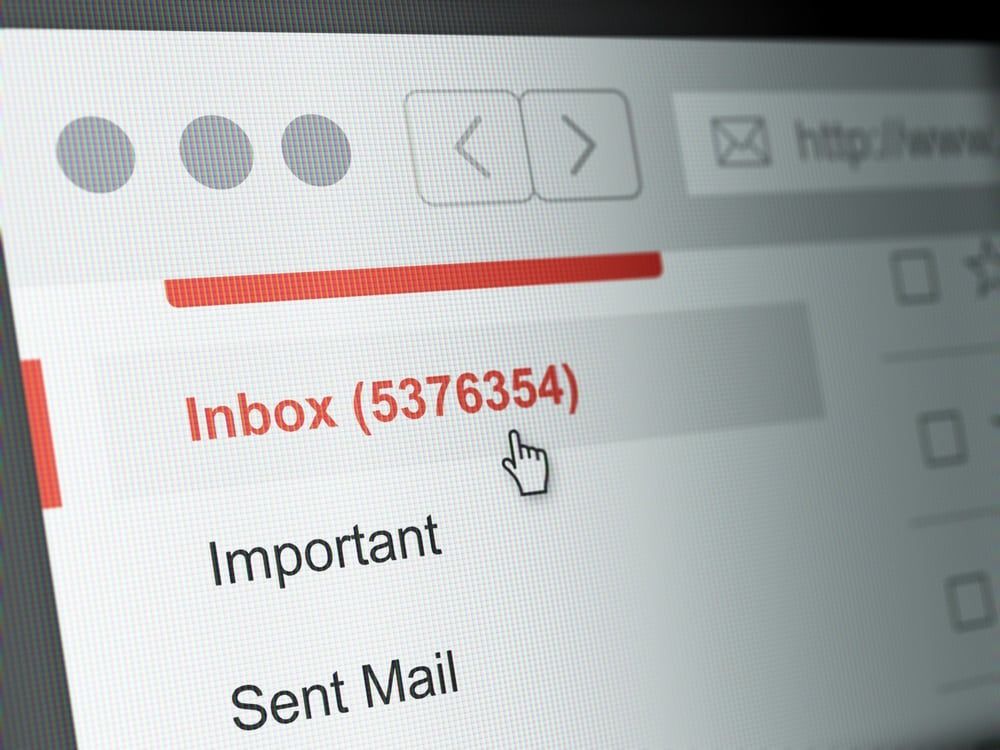How to Trace an IP Address From Email – The Complete Guide
Cindy Ellis - March 17, 2024

In today’s digital landscape, safeguarding your email security is more crucial than ever. With reports of soaring phishing and malware attacks in 2023, it’s evident that cyber threats are on the rise. To put it in perspective, phishing volumes surged by a staggering 173%, skyrocketing from 180.4 million in Q2 2023 to 493.2 million in Q3 2023 alone.
It would help if you had a few tricks up your sleeve to protect yourself (and your private information) from prying eyes. For instance, knowing how to trace an IP address from an email can empower you to identify potential scams and spam or even track suspicious activity.
By extracting and looking up these addresses, you can unveil who is behind malicious or questionable messages.
This guide delves into the process of tracing an IP address from an email, providing step-by-step instructions and valuable insights to help you understand the journey of your email and potentially identify the sender’s location.
What Is an IP Address?
Before diving into the intricacies of tracing an IP address from an email, let’s first unravel the essence of an IP address. In the vast expanse of the internet, an Internet Protocol (IP) address is a unique numerical identifier assigned to every device connected to a network, including the one you’re using to read this guide.
Think of it as the virtual equivalent of a home address, uniquely designating each device and facilitating communication within the expansive web of interconnected devices. Much like how a physical address denotes a specific location, an IP address pinpoints the precise digital location of a device in the online realm.
In the context of emails, an IP address acts like a unique digital footprint attached to an email during its journey. It functions as an identification label for the device that sent the email, similar to a return address on a physical envelope. However, it’s crucial to understand that:
- An IP Address Identifies the Device, Not the Individual: Unlike a physical address, which points to a specific location and individual, an IP address usually points to the device that sent the email, not necessarily the person behind it. This device could be a computer, laptop, phone, or other internet-connected device.
- It Doesn’t Reveal the Exact Location: While some IP addresses might offer a general idea of the sender’s geographical region (e.g., city, state), they rarely pinpoint the exact location, like a street address.
- Email Spoofing Can Be Deceptive: Unfortunately, email senders can manipulate the “from” address to display a different identity, making the associated IP address misleading and unreliable in identifying the actual sender.
Therefore, while IP address tracing can be a starting point for understanding the origin of an email, it’s essential to be aware of its limitations and use it with caution and ethical considerations in mind.
Why Should You Trace the IP Address of Emails?
While not foolproof, tracing the IP address of an email can offer valuable insights in various situations. This includes:
- Identifying Spam and Phishing Attempts: Tracing the IP address of a suspicious email can help determine if it originates from a known spammer or phisher. This can help flag and report the email to prevent further attempts and protect yourself and others.
- Investigating Abusive or Threatening Emails: If you receive harassing or threatening emails, tracing the IP address can potentially provide a lead in identifying the source. However, it’s crucial to remember that the information obtained may not be entirely accurate, and legal recourse may require further investigation and involvement of law enforcement.
- Understanding the Origin of Suspicious Emails: Occasionally, you might receive unexpected emails from legitimate senders. Tracing the IP address can help confirm their identity and legitimacy, especially if you need clarification on the source.
Note: While IP tracing can be a tool in specific situations, it should be used cautiously, ethically, and with an understanding of its limitations. Never use this information for malicious purposes or invade someone’s privacy.
Effective Ways to Trace an IP Address From Email
Tracing an IP address from an email involves two main stages: identifying the IP address and potentially uncovering further details about it. However, it’s crucial to remember that both stages have limitations and ethical considerations, and the resulting information may not be accurate or reliable.
Step 1: Locating the IP Address
There are several methods to locate the IP address associated with an email:
- Email Header Analysis
Every email, before reaching your inbox, embarks on a journey through various servers and networks. The details of this journey and crucial information about the sender, recipient, and the email itself are hidden in plain sight within the email header.
Think of an email header as a behind-the-scenes control center. It holds various fields containing information like:
- From: The sender’s email address (which might be spoofed).
- To: The recipient’s email address(es).
- Subject: The topic of the email.
- Date: The time and date the email was sent.
- Received: Shows the email’s path, with each server adding its own “Received” line, revealing its route.
- Other Technical Details: These include information about message size, content type, and encryption.
Email header analysis involves accessing the hidden details within the email itself. The steps vary depending on your email platform but generally involve:
- Opening the email.
- Clicking on the “more options” or similar menu (usually three dots).
- Selecting “Show original” or “View source” (whichever option reveals the email header).
Within the email header, you’ll find numerous technical details. Look for lines starting with “Received from: “, as these indicate the email’s path. The earliest “Received from” line often contains the device’s IP address that was initially used to send the email.
However, remember that some emails might have multiple IP addresses. This can occur if the email is passed through multiple servers. In this case, focus on the earliest “Received from” line. It’s also important to realize that IP addresses don’t reveal exact locations — they typically offer a general idea of the region or city, not a specific address.
- Online Email Header Analysis Tools
These online tools claim to analyze email headers and sometimes extract the IP address. However, use them with extreme caution due to potential limitations in accuracy, privacy concerns, and ethical considerations.
- Email Tracking Services (for businesses)
Businesses typically use these services for marketing purposes and allow tracking email opens and clicks. They might reveal the IP address of recipients who open the email, but ethical considerations and consent requirements are crucial in such scenarios.
- Command Line Prompts
This method involves technical knowledge and utilizing specific commands to analyze email headers in a command-line environment. It’s recommended for advanced users only due to its technical nature.
Utilities like “traceroute” or “ping” can be valuable for tech-savvy users comfortable with command line interfaces. These tools enable you to trace the route taken by the email and identify the IP addresses of the servers it passed through.
Step 2: Uncovering Further Details Using the IP Address
Once you have the IP address, utilize IP address lookup services to gather additional information about the sender. You can choose among numerous free and paid IP lookup services. Just make sure you choose a reputable service with a clear privacy policy and terms of use.
These services provide insights such as geographical location, ISP (Internet Service Provider), and other pertinent details associated with the IP address. Sometimes, the service might identify the organization associated with the IP address, but this isn’t always reliable.
That said, please note that IP address lookup tools have their limitations. Because IP addresses are dynamically assigned and can change frequently, the information provided by lookup services might only sometimes be accurate or up-to-date.
Additionally, malicious actors can manipulate IP addresses through email spoofing, making the location and other details associated with them unreliable.
Alternate Option: Use An Email Lookup Service
In addition to IP address lookup services, an email lookup service is another effective method to gather information about the sender. These services specialize in retrieving detailed information about email addresses, including the sender’s name, location, and online presence.
For example, whenever you receive an email from an unknown sender, you can run their email address through an email lookup tool to verify its authenticity. This will allow you to validate if the email address is associated with a legitimate individual or organization, helping you discern between genuine communications and potential scams.
Some email lookup services go beyond basic information and provide additional insights into the sender’s online behavior, reputation, and interactions. This can include reviews, ratings, and feedback from other users who have interacted with the sender in the past.
Tracing an Email’s IP Address Is Easy If You Do It Right
Tracing an email’s IP address can be straightforward if you follow the proper steps. By utilizing an email lookup service in conjunction with IP address lookup services, you can enhance your ability to trace and understand the origins of an email.
However, it’s essential to use these services responsibly and respect the privacy of individuals. With the right approach, you can navigate the digital landscape more confidently and safeguard your online security effectively.






